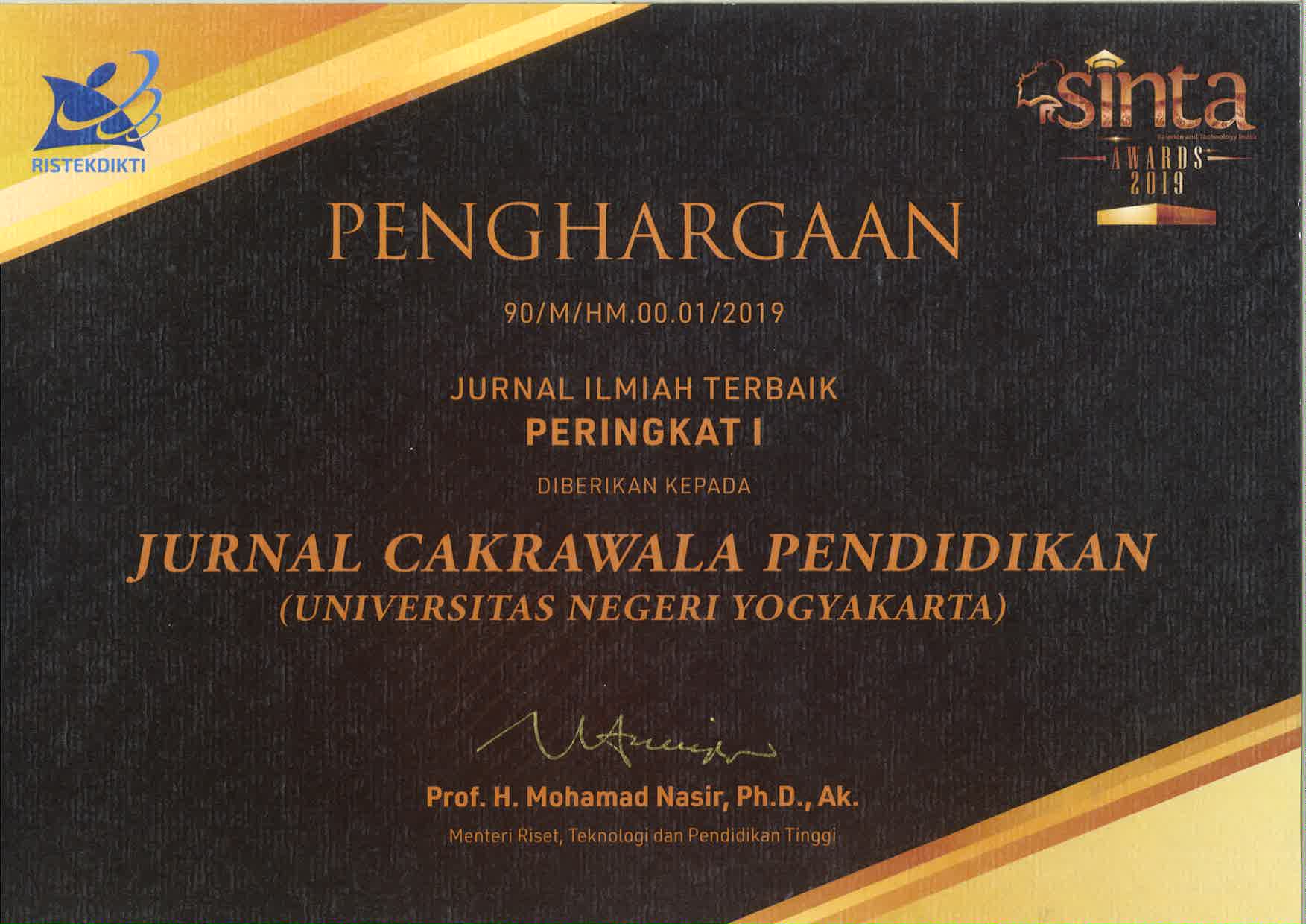BLENDED LEARNING IN FRENCH INTERMEDIATE GRAMMAR LEARNING: IS IT EFFECTIVE?
Downloads
Downloads
Akkoyunlu, B., & Soylu, M. Y. (2006). A study on students' views on blended learning environment. Turkish Online Journal of Distance Education, 7(3), 43-56.
Creswell, J. (2012). Educational research: Planning, conducting and evaluating quantitative and qualitative research (3rd ed). Upper Saddle Reiver, NJ: Pearson Education Inc.
Denzin, N. K. & Lincoln, Y. S. (2008). Collecting and interpreting qualitative materials (3rd ed). Thousand Oaks, CA: Sage Publications.
Hsu, C. L., & Lin, J. C. C. (2007). Acceptance of blog usage: The roles of technology acceptance, social influence and knowledge sharing motivation. Information & Management, 45(1), 65-74. https://doi.org/10.1016/j.im.2007.11.001.
Isti'anah, A. (2017). The effect of blended learning to the students' achievement in grammar class. IJEE (Indonesian Journal of English Education), 4(1), 16-30. https://doi.org/10. 15408/ijee.v4i1.5697.
Ja'ashan, M. M. N. H. (2015). Perceptions and attitudes towards blended learning for english courses: A case study of students at University of Bisha. English Language Teaching, 8(9), 40-50. https://doi.org/10.5539/elt.v8n9p40.
Jee, K. S., Ng, P. K., Lim, S. T., & Lee, C. H. (2016). The effectiveness of blended learning: A case study undergraduate engineering students in a Private University. Australian Journal of Basic and Applied Sciences, 10(3), 46-51. www.ajbasweb.com.
Lucia, M. G. R., & Stan, V. M. (2018). Second language acquisition via virtual learning platforms: A case study on Romanian experiences. Journal on Interdisciplinary Studies in Humanities, 10(3), 180-190. https://doi.org/10.21659/rupkatha.v10n3.15.
Mardapi, D. (2012). Pengukuran penilaian & evaluasi pendidikan. [Assessment measurements & educational evaluation]. Yogyakarta: Nuha Litera.
Marsh, D. (2012). Blended learning: Creating learning opportunities for language learners. New York, NY: Cambridge University Press.
Ministry of Research and Technology. (2017). Panduan teknis indikator kinerja pengembangan pusat unggulan Iptek Tahun 2017. [Technical guide for performance indicators for the development of the leading Iptek Center in 2017]. Jakarta, Indonesia: Direktorat Jenderal Kelembagaan Iptek dan Dikti.
Murray, J. (2013). Likert data: What to use, parametric or non parametric. International Journal of Business and Social Science, 4(11), 259-264. www.ijbssnet.com.
Mutaqin, A., Marethi, I., & Syamsuri, S. (2016). Model blended learning di Program Studi Pendidikan Matematika Untirta. Cakrawala Pendidikan, 35(1), 134-141. https://doi.org/10.21831/cp.v1i1.8384.
Prawoto, E. C., & Pramulia, P. (2019). Pembelajaran sastra berbasis blended learning. [Literary learning based on blended learning]. Online Journal Efektor, 6(1), 37-42. https://doi.org/10.29407/e.v6i1. 12532.
Saliba, G., Rankine, L., & Cortez, H. (2013). Fundamentals of blended learning. Sydney: University of Western Sydney.
Shih, R. C. (2013). Effect of using facebook to assist english for business communication course instruction. The Turkish Online Journal of Educational Technology, 12(1), 52-59. https://www.learntechlib.org/p/132122/.
Staker, H., & Horn, M. B. (2012). Classifying K-12 blended learning. Mountain View, CA: Innosight Institute.
Stricker, D., Weibel, D., & Wissmath, B. (2011). Efficient learning using a virtual learning environment in a university class. Computers & Education, 56(2), 495-50. https://doi.org/10.1016/j.compedu.2010.09.012.
Suharsono, S. (2015). Pemerolehan klausa relatif pada Pemelajar Bahasa Indonesia bagi Penutur Asing (BIPA): Kajian Bahasa-Antara. [The acquisition of relative clauses by BIPA learners: An interlanguage study]. Jurnal Litera, 14(1), 57-74. https://doi.org/10.21831/ltr.v14i1.4407.
Suo, S. Y., & Mei, S. Y. (2018). Perceptions and practices of blended learning in foreign language teaching at USIM. European Journal of Social Sciences Education and Research, 12(1), 170-176. https://doi.org/10.26417/ejser. v12i1.
Sutisna, A. (2016). Pengembangan model pembelajaran blended learning pada pendidikan kesetaraan program Paket C dalam meningkatkan kemandirian belajar. [Development of blended learning model on equality education of the package C program in improving learning independence]. Jurnal Teknologi Pendidikan, 18(3), 156-168. https://doi.org/10.21009/JTP 1803.2.
Tellis, W. M. (1997). Application of a case study methodologi. Journal of The Qualitative Report, 3(3), 1-19. http://www.nova.edu/ssss/QR/QR3-3/tellis2.html.
Trochim, W. M. K., & Donnely, J. P. (2006). Research methods knowledge base (3rd ed). Mason, Ohio, United States: Atomic Dog.
Tucker, C. R. (2012). Blended learning grade 4-12. Thousand Oaks, CA: Corwin A Sage Company.
Watson, J. (2008). Blended learning: Convergence between online and face to face education. USA: North American Council for Online Learning. https://files.eric.ed.gov.
Won, S. C., & Yong, T. Y. A. ( 2016). An empirical evaluation of critical factors influencing learner satisfaction in blended learning: A pilot study. Universal Journal of Educational Research, 4(7), 1667-1671. https://doi.org/10.13189/ujer.2016.040719.
Wright, B. M. (2017). Blended learning: Student perception of face-to-face and online EFL lessons. Indonesian Journal of Applied Linguistics, 7(1), 64-71. https://doi.org/10.17509/ ijal.v7i1.685.
Zainuddin, Z., & Keumala, C. M. (2018). Blended learning method within indonesian higher education institutions. Jurnal Pendidikan Humaniora, 6(2), 69-77. http://journal. um.ac.id/index.php/jph.
Jurnal Cakrawala Pendidikan, Jurnal Ilmiah Pendidikan, with ISSN: 0216-1370, is published by the Institute of Education Development and Quality Assurance (LPPMP UNY). Cakrawala Pendidikan has been recently has been re-accredited by Indonesian Ministry of Education and Culture decision Number 230/E/KPT/2022 which is valid for five years since enacted on 30 December 2022.




























